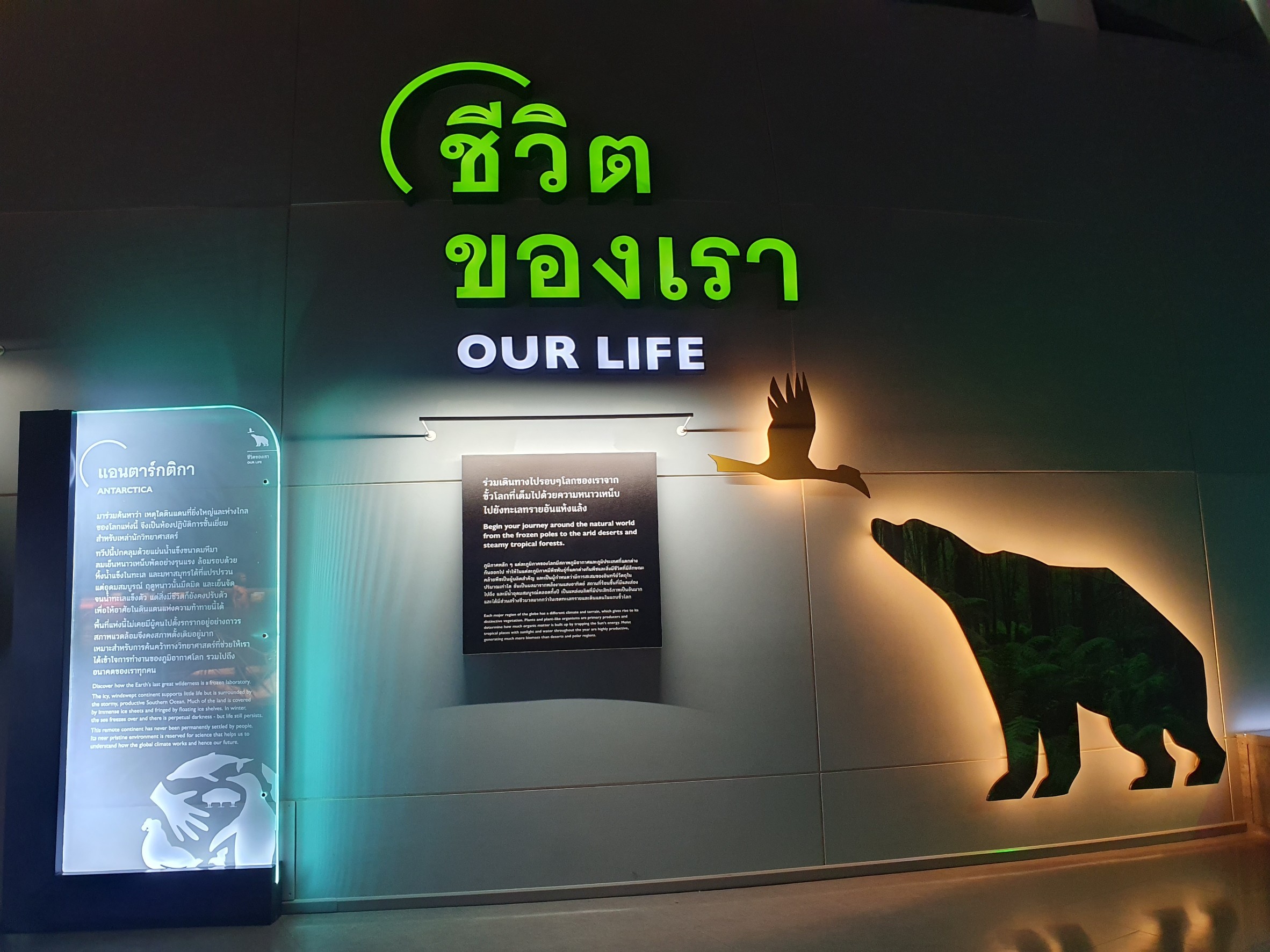




Our Life
In our second section, you can travel the world in a single day on a journey through the major biomes on Earth. Learn about flora, fauna, and people that inhabit them, as well as the effects of human activity in each part.
พิพิธภัณฑ์พระรามเก้าเป็นโครงการที่ริเริ่มเนื่องในโอกาสมหามงคลเฉลิมพระชนมพรรษา 80 พรรษา พระบาทสมเด็จพระบรมชนกาธิเบศร มหาภูมิพลอดุลยเดชมหาราช บรมนาถบพิตร โดยนำเสนอหลักการคิด วิธีการทรงงาน และกระบวนการค้นหาคำตอบตามกระบวนการทางวิทยาศาสตร์ของในหลวงรัชกาลที่ 9 ที่ทรงพระราชทานแนวทางปรัชญาเศรษฐกิจพอเพียงเพื่อแก้ปัญหาแก่พสกนิกรในพื้นที่ต่าง ๆ ทั่วประเทศไทย ภายในพิพิธภัณฑ์จัดแสดงนิทรรศการและกิจกรรมที่แสดงถึงวิวัฒนาการของโลกและสิ่งมีชีวิต ระบบนิเวศ และความหลากหลายทางชีวภาพในแต่ละภูมิภาคของโลกรวมถึงประเทศไทย

23 ตุลาคม 2567 / ดร.กรรณิการ์ เฉิน รองผู้อำนวยการองค์การพิพิธภัณฑ์วิทยาศาสตร์แห่งชาติ (อพวช.) หรือ NSM ร่วมเปิดงาน "Plan For Kids Festival: โตขึ้นหนูอยากเป็น..." เพื่อส่งเสริมการเรียนรู้ของเด็กและเยาวชนที่หลากหลาย ผ่านฐานกิจกรรมการเรียนรู้อย่างสร้างสรรค์ ทั้งนี้ NSM ได้ร่วมนำนิทรรศการเคลื่อนที่และกิจกรรมสนุกสนานด้านวิทยาศาสตร์ไปจัดแสดงภายในงานมากมาย อาทิ นิทรรศการ Plearn Science Exhibition ชุด Plearn Science Explorer วิทยาศาสตร์สำหรับเด็กปฐมวัย เพื่อส่งเสริมทักษะและพัฒนาการอย่างสร้างสรรค์ และกิจกรรม Imaginarium BLUE BOX สนามเด็กเล่นแห่งจินตนาการดึงดูดเยาวชนให้สนุกสนานสร้างสรรค์ฝึกฝนจินตนาการโดยงานฯ จัดขึ้นระหว่างวันที่ 23 - 27 ตุลาคม 2567 เวลา 10.00 - 21.00 น. ณ เวสต์เกตฮอลล์ ชั้น 4 ศูนย์การค้าเซ็นทรัลเวสต์เกต

7 กุมภาพันธ์ 2565 / ดร.พีรนุช กัณหดิลก ผู้อำนวยการศูนย์พัฒนาความตระหนักด้านวิทยาศาสตร์แห่งชาติ องค์การพิพิธภัณฑ์วิทยาศาสตร์แห่งชาติ (อพวช.) รับ Certificate Social Action Award Short-listed Alumni ถือเป็นรางวัลที่มอบให้สำหรับศิษย์เก่าที่มีส่วนร่วมและมุ่งมั่นที่จะสร้างการเปลี่ยนแปลงทางสังคมในเชิงบวกและพัฒนาชีวิตของผู้อื่น โดยมี คุณ Mark Gooding, British Ambassador to Thailand และคุณ Helga Stellmacher Director of British Council Thailand เป็นผู้มอบรางวัลฯ ดังกล่าว ในงาน Study UK Alumni Awards Thailand 2023 จัดโดย บริติช เคานซิล ประเทศไทย ร่วมกับ สถานทูตอังกฤษ ณ British Club Bangkok
